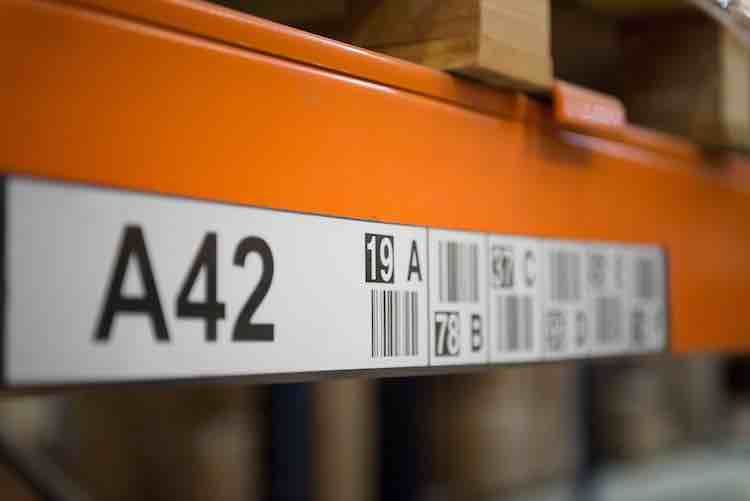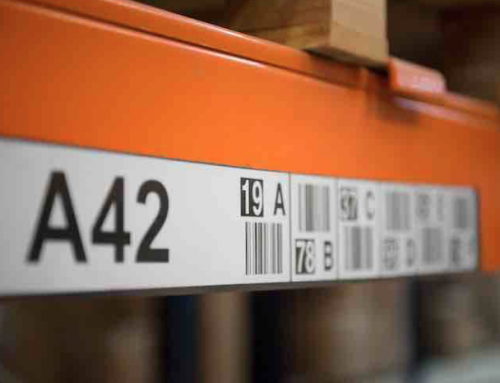The need to have a barcode WMS is a common misconception among those unfamiliar with such systems.
The short answer is no, you don’t need to barcode all products to use a WMS, but it may depend on how you use the system.
When we say ‘warehouse management system’, or WMS, we usually mean the software that does the managing in the background. The application, either locally hosted or cloud-based that you access from a PC.
In its ‘traditional’ mode a WMS will generate paper instructions to perform tasks. These are used in the warehouse to perform putaway, picking and other movements, and when completed the paperwork is returned to the PC so that someone can ‘update’ the tasks as complete.
Many companies still use a WMS at this basic level, and in certain environments they are adequate and effective. But nowadays people typically use an additional form of technology with a WMS to enable ‘mobile’ working in real time.
This can involve various forms of mobile device, starting with the established rugged industrial handhelds (used in logistics operations for many years), but now including tablet devices and even mobile phones. And it’s with these kinds of devices, which have the ability to scan barcodes as an integral or add-on function, that the barcoding issue becomes more relevant.
Then consider the reason you want to scan any barcode. This is quite simple; a barcode is scanned either to save input time, or to verify the identity of the barcoded item. In warehouse management both of these needs are relevant, and the two things you will mainly scan in a warehouse are (a) locations and (b) products.
Locations and Products with Barcode WMS
In some ways this explains the confusion behind the question, as identification of locations is really more critical to a WMS than identifying products. A WMS works by ensuring that stock is always in the right place, and always picked from the right place. This works with a basic paper-based system to a level, but for mobile devices you need bar-coded location identifiers that can be scanned.
This means you must make sure your locations are correctly and logically numbered and labelled, and the labels you use are of adequate quality for scan recognition. As well as the location identifier, you may want to consider adding a unique ‘check digit’ in barcode form, which acts as a double check on location integrity.
This is an example of verifying the identity of a scanned article, in this case the location. But the key point is that a WMS can happily function without having any bar-coded products. And as with the basic form of system mentioned above, many companies do use WMS systems effectively without the need for bar-coded products. There are a number of reasons for this.
In many logistics operations the nature and type of the product does not require barcode identification. The product range may be small and easily recognised, making recording and handling errors unlikely. It may comprise only low cost items, with a limited need to verify them during the logistics process. Or they may be very large – when you pick them you know you’ve picked them!
There can also be difficulty, sometimes, in actually getting your products bar-coded. People are often surprised that even large companies experience problems, particularly with imported products, in getting a diverse range of suppliers to conform to a uniform barcoding standard.
However, if your products are already bar-coded, or must be, a WMS offers extra functionality to maximise the benefit of a barcode scan. There are many reasons for bar-coding products. It could be for legal or consumer reasons, customer stipulation, because of an extensive product range or just because they are too small to be easily identified without one.
The first place where this is a benefit is when receiving product. Being able to scan a product at the point of intake which pre-populates your system with its specific data is a big advantage in terms of receipt processing productivity and accuracy. But it is on the picking and despatch side that the bar-coded product offers even bigger benefits in data capture accuracy.
In order to guarantee high order accuracy the ability to verify products at the point of picking is a major advantage. Not only can you confirm that particular product code is correct, it is also possible to scan serial numbers to identify a unique individual item. With certain types of products, for example electronics, this is an extremely common requirement.
Where scanning does not take place at the picking stage, and the verification of orders is done at a later (usually packing) stage, scanning can also be used to ensure that orders are correct. And the value of a scan also applies when performing any internal movement of products, transfers between locations, extraction for processing or sampling and any similar needs.
So in conclusion, a good WMS will take full advantage of products which are bar-coded (even if only part of the product range) in order to offer a higher level of accuracy and order integrity. But if your products are not bar-coded this is not a barrier to using a WMS, with or without mobile technology, and there are still many benefits that can be realised.






